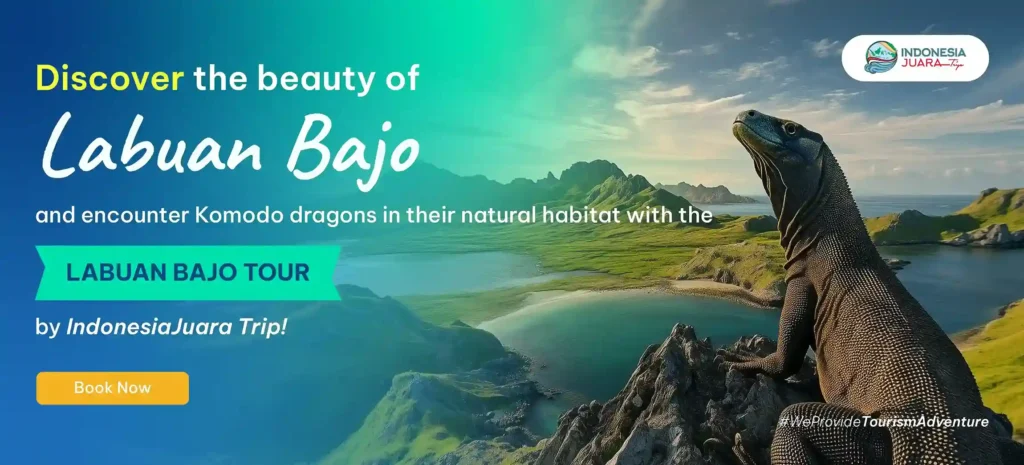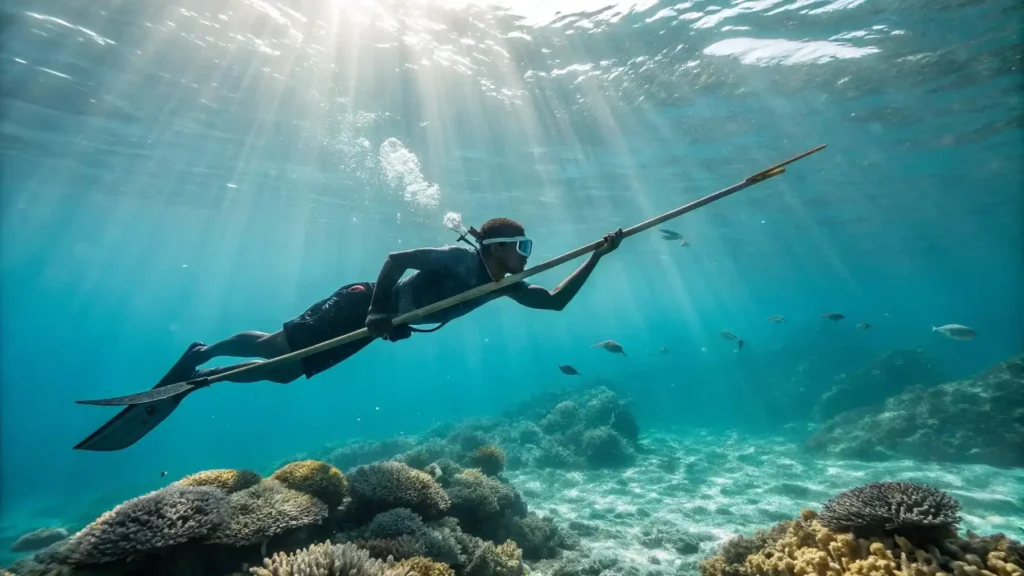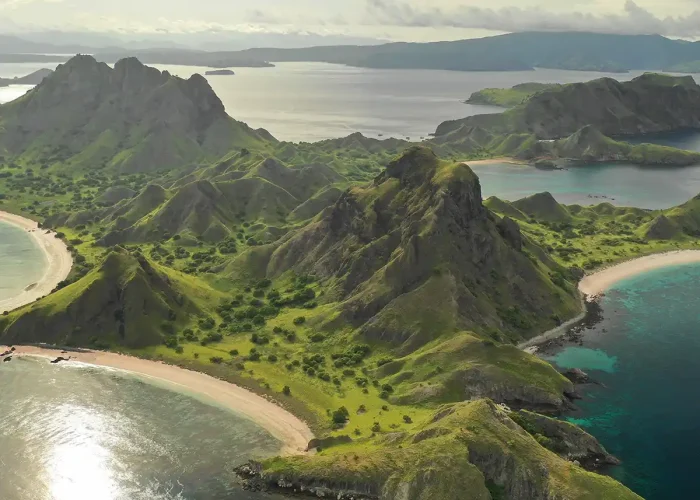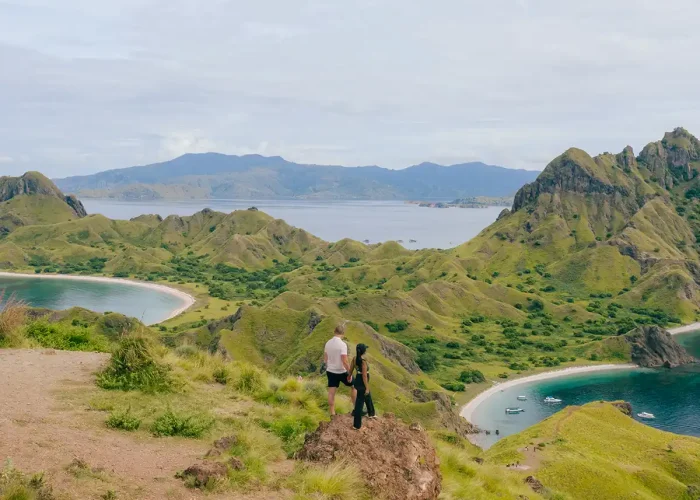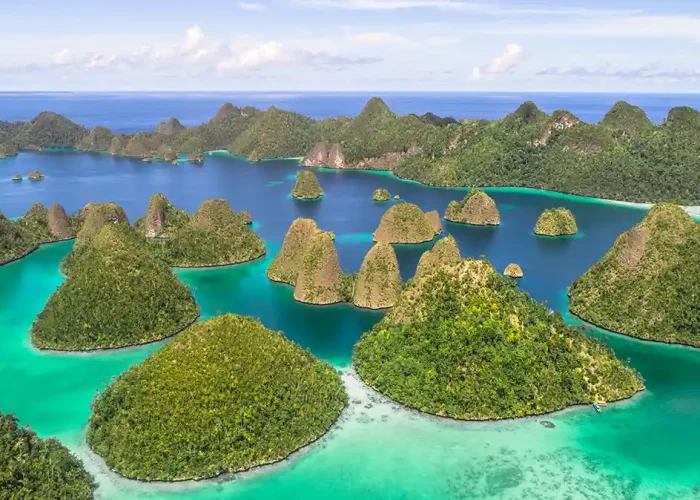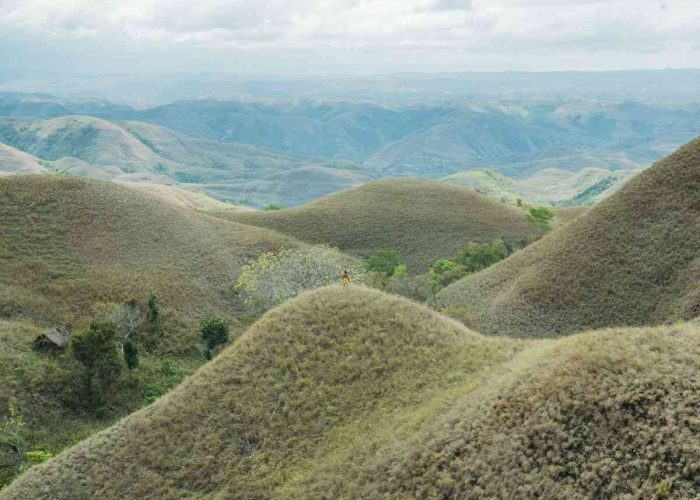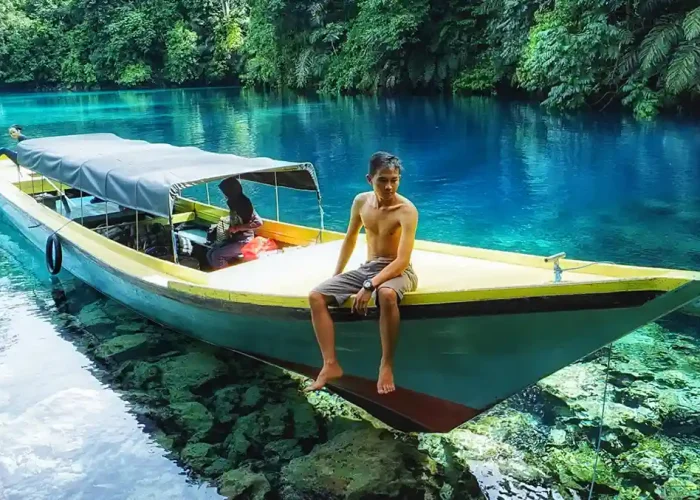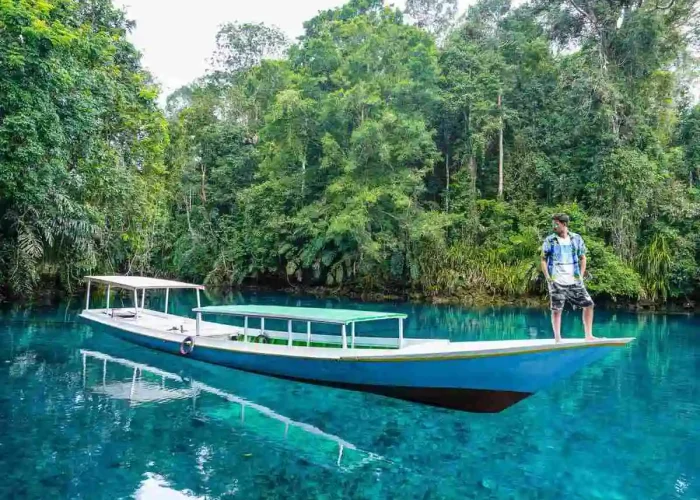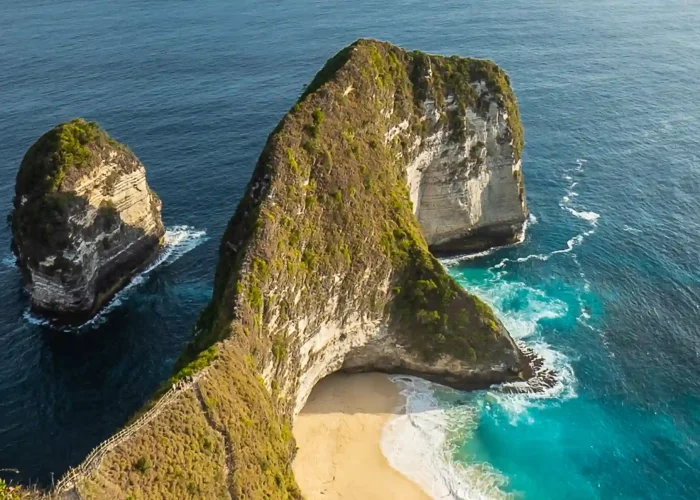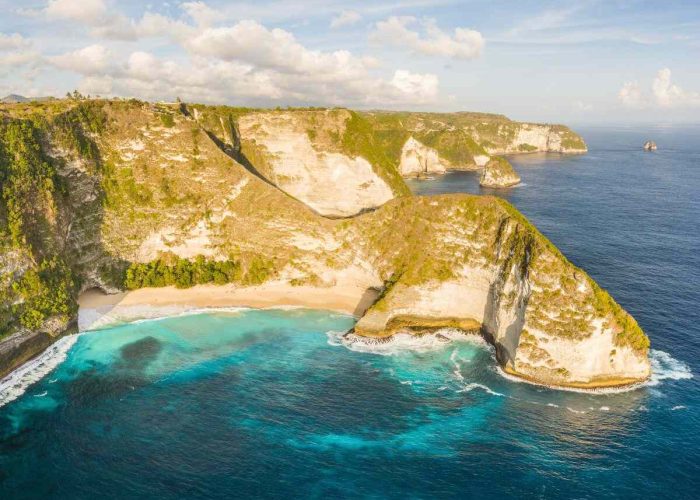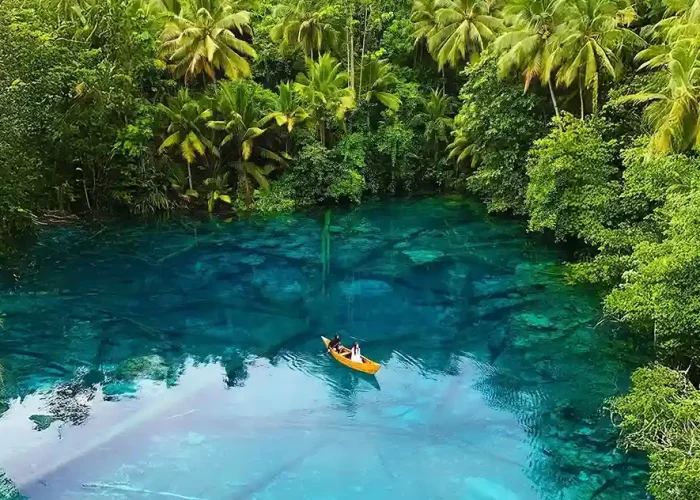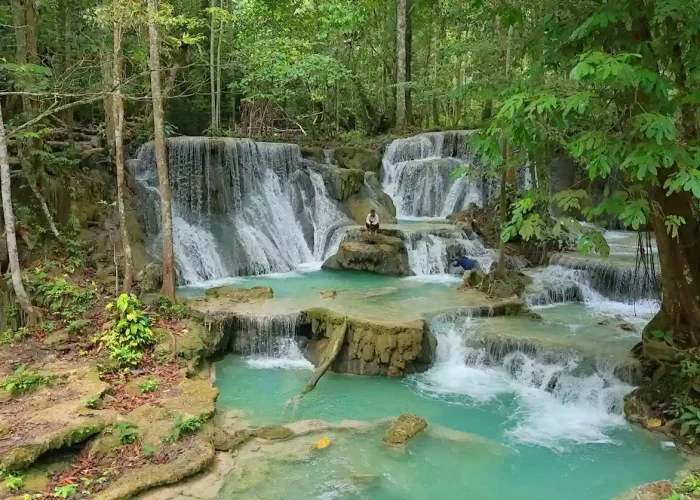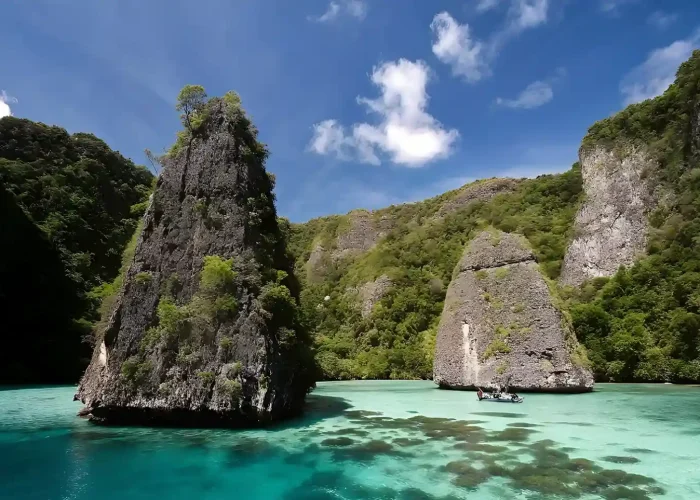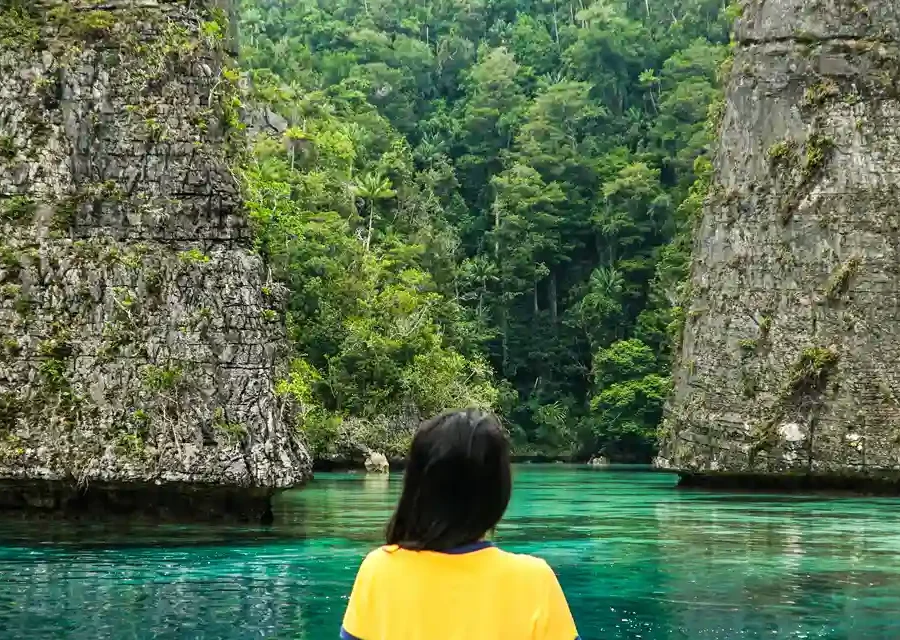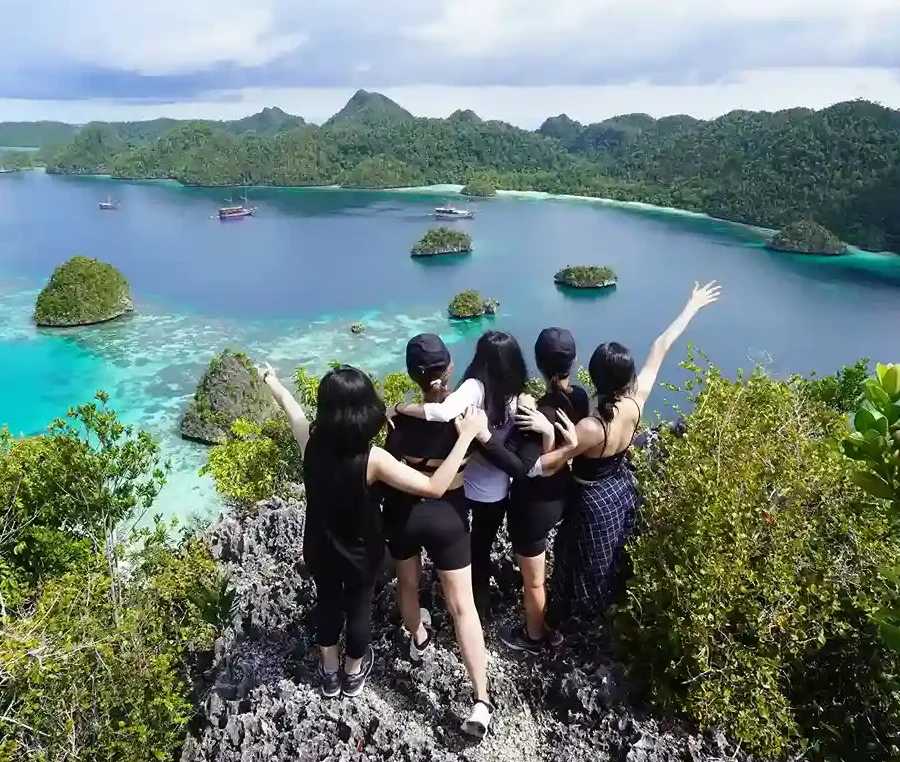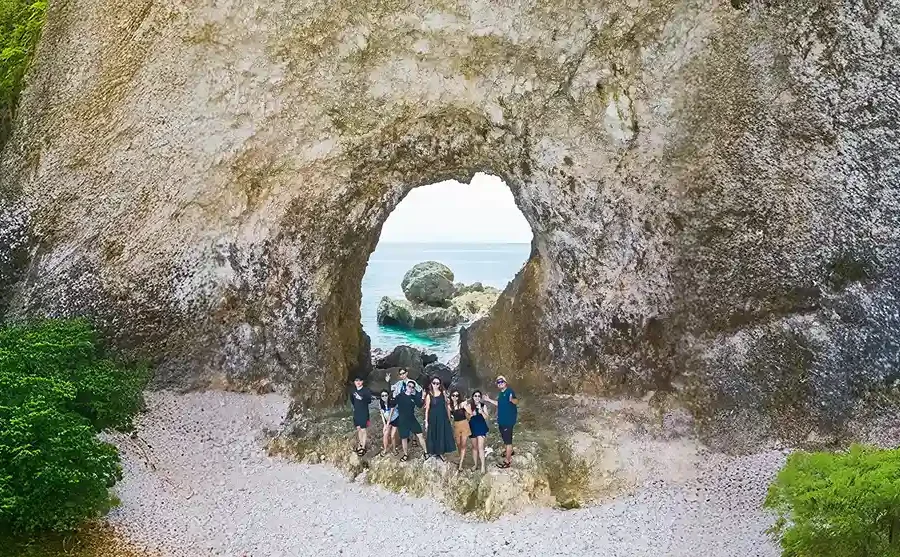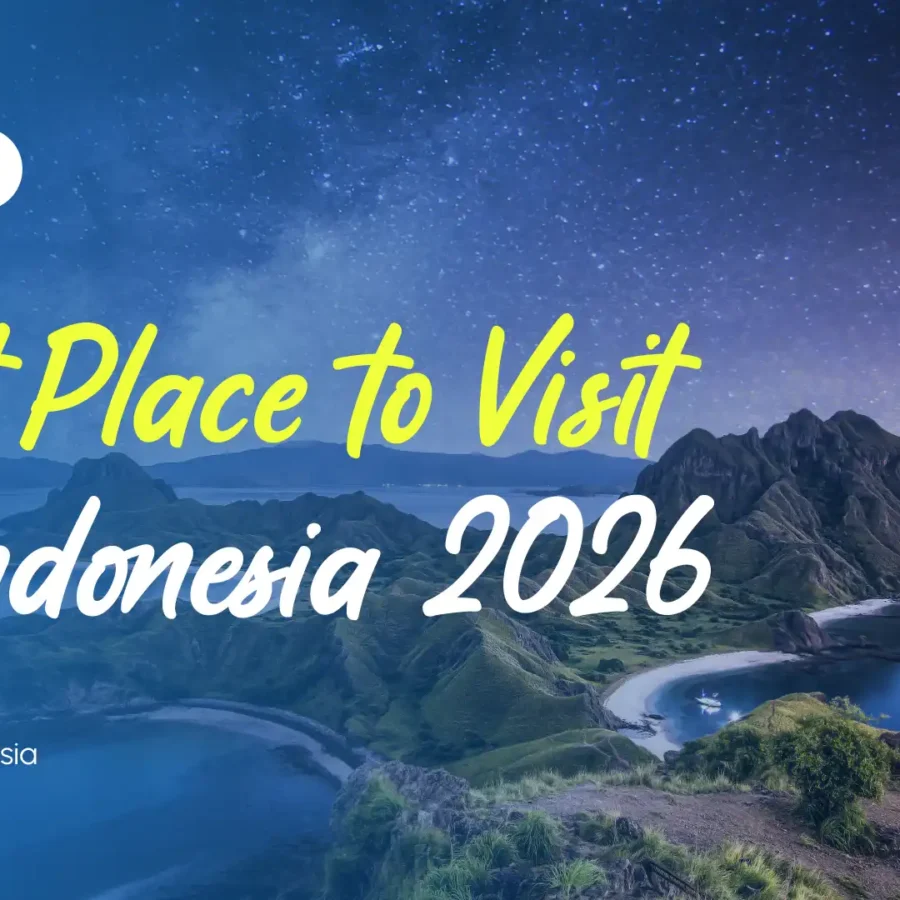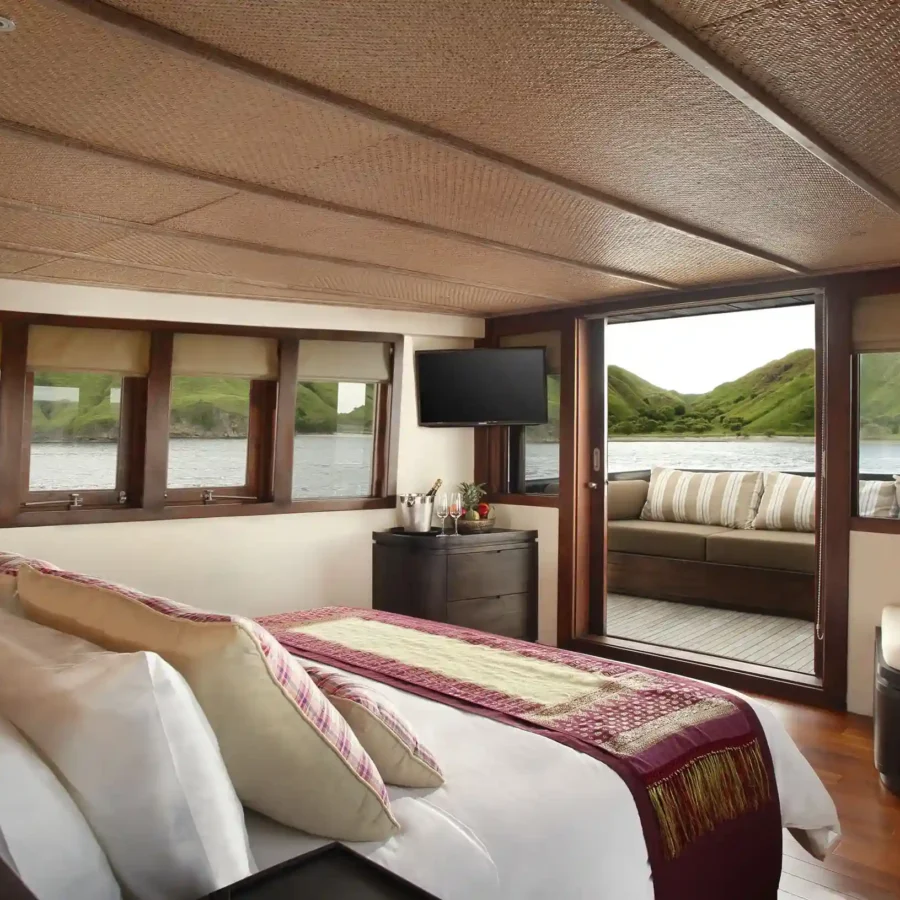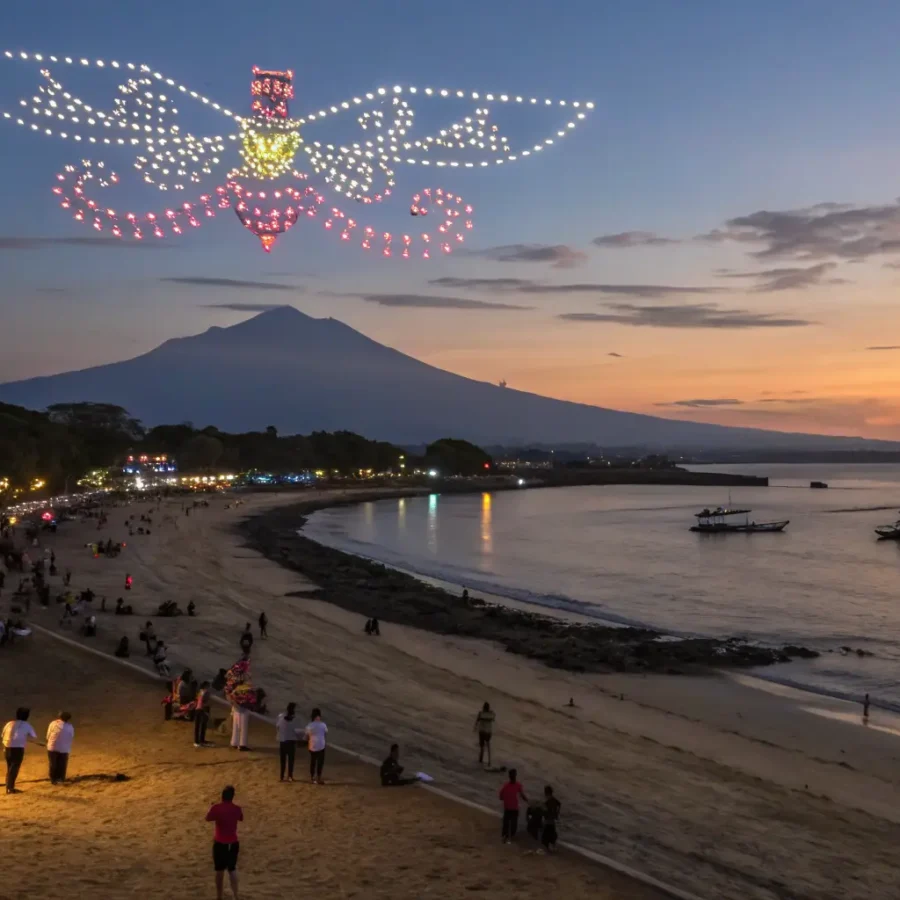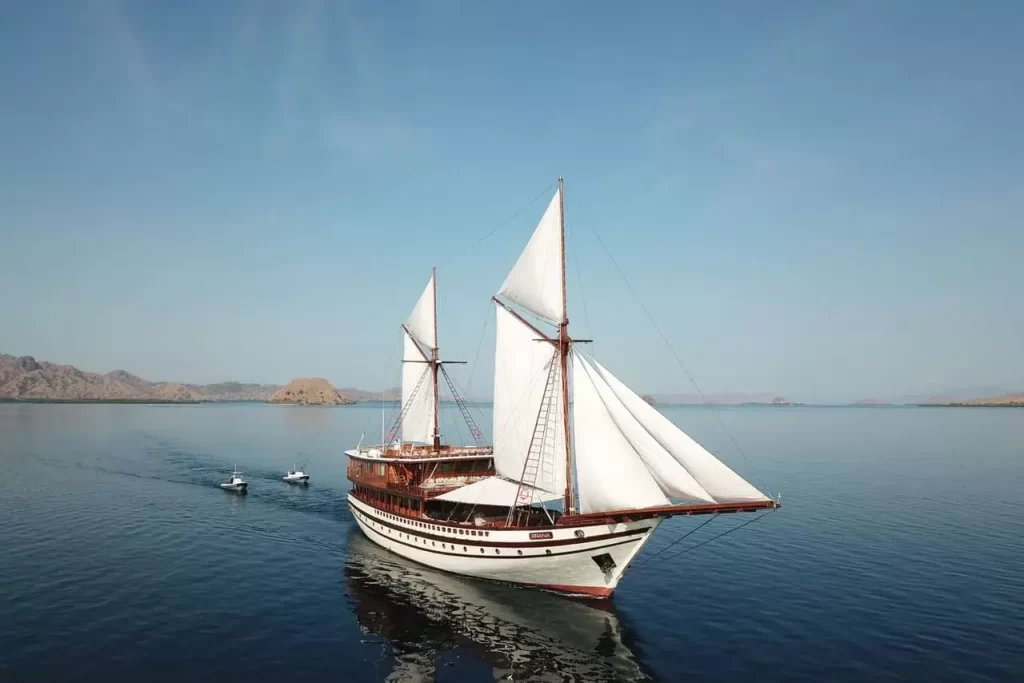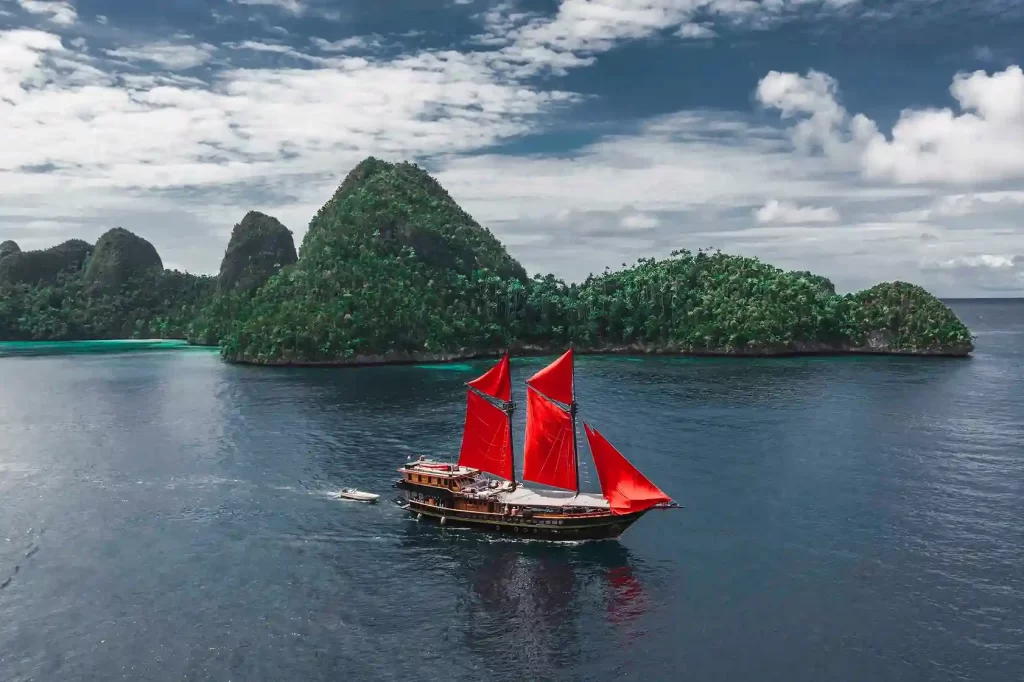Ever Heard of the Bajo Tribe, Indonesia’s True Sea Nomads? They’re not just ordinary fishermen. The Bajo tribe is a community that has turned the ocean into their home, their classroom, and their daily living space. From Eastern Indonesia to the remote coastal areas of the archipelago, the Bajo are known as master seafarers who have been navigating the seas for centuries, long before modern maps existed.
The Bajo tribe isn’t just unique, they’re an essential part of Indonesia’s rich maritime heritage. Despite modern times and rapid development, they’ve preserved a way of life deeply rooted in harmony with the sea. Curious about what their daily lives look like? Let’s dive into their world.
Table of Contents
Who Are the Bajo Tribe?
The Bajo tribe is a maritime community known as “Orang Laut” or “Sea Nomads” due to their close and enduring relationship with the sea. They live in stilt houses built over the water, depend on the ocean’s resources for survival, and are used to sailing from a very young age, even before they can read.
Interestingly, many of them still maintain their traditional way of life amid the wave of modernity. From how they build their homes, speak their own language, to their ability to read the wind and ocean currents, all these skills are passed down from generation to generation. For the Bajo, life isn’t about chasing the comforts of land, but about living in harmony with the ocean that has been a part of them for so long.
History of the Bajo Tribe
The origin of the Bajo tribe remains a subject of debate among anthropologists. Some believe they came from the southern Philippines, specifically the Sulu Archipelago, before migrating to Eastern Indonesia. Others argue they descended from Bugis or Makassar sailors who chose to live at sea and eventually formed an independent community.
Regardless of the theory, one thing is certain: the Bajo tribe has long been recognized as expert seafarers, able to navigate vast oceans without modern technology. They read the wind, the sun’s position, and the movement of stars to find direction. These remarkable skills have been passed down for generations and are deeply ingrained in their identity.
Daily Life of the Bajo People
Living on the ocean is no easy feat, yet the Bajo live it with wisdom and deep-rooted traditions. Here are some fascinating aspects of their everyday life:
1. Living in Stilt Houses Above Water
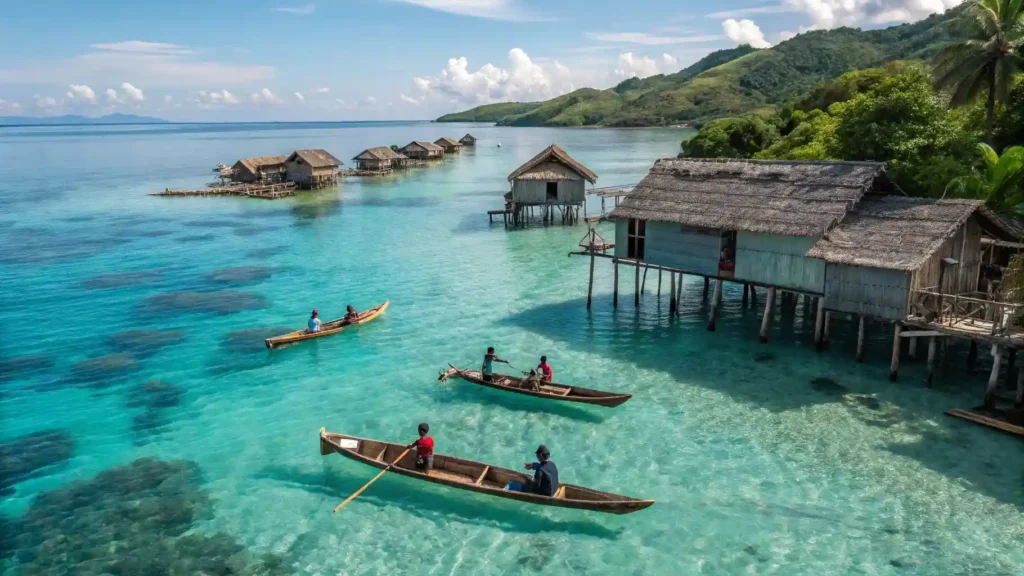
The Bajo build their homes above shallow, clear waters using wooden stilts. From a distance, their villages appear as beautiful floating settlements. In some places, the houses are connected by small wooden bridges, creating a close-knit, self-sufficient community. They feel safer living at sea than on land. The ocean is not just their livelihood, it’s their front yard, their playground, their classroom, and their backyard all at once.
2. Sailing from an Early Age
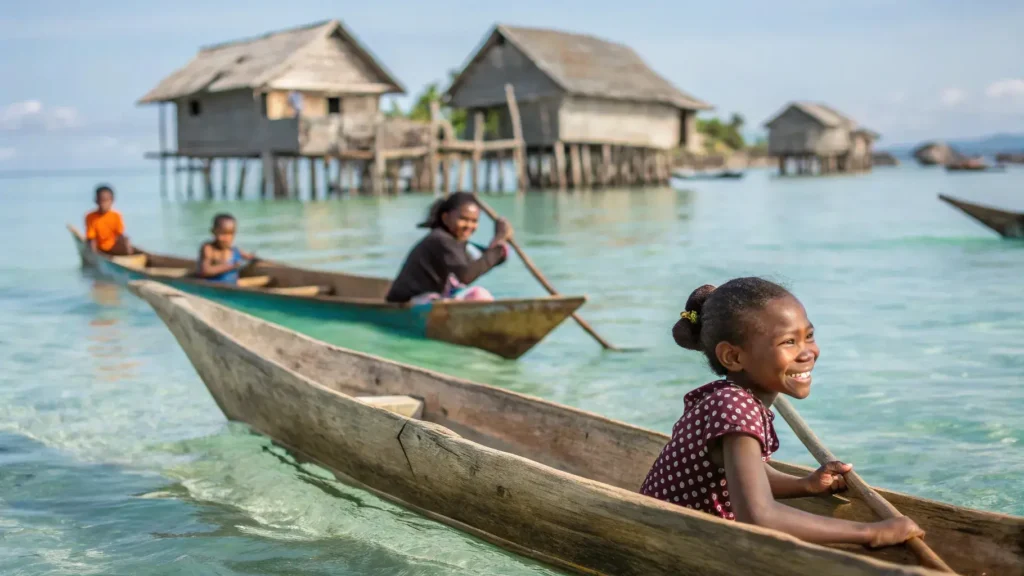
Bajo children are introduced to the sea early on. Many learn to row, fish, and dive before they even learn to read. These aren’t just fun activities, they’re survival skills. While adult men spend most of their time fishing for squid, sea cucumbers, or reef fish, the women tend to the home, prepare the catch, and occasionally dive for shells or seaweed.
3. Legendary Free-Diving Skills
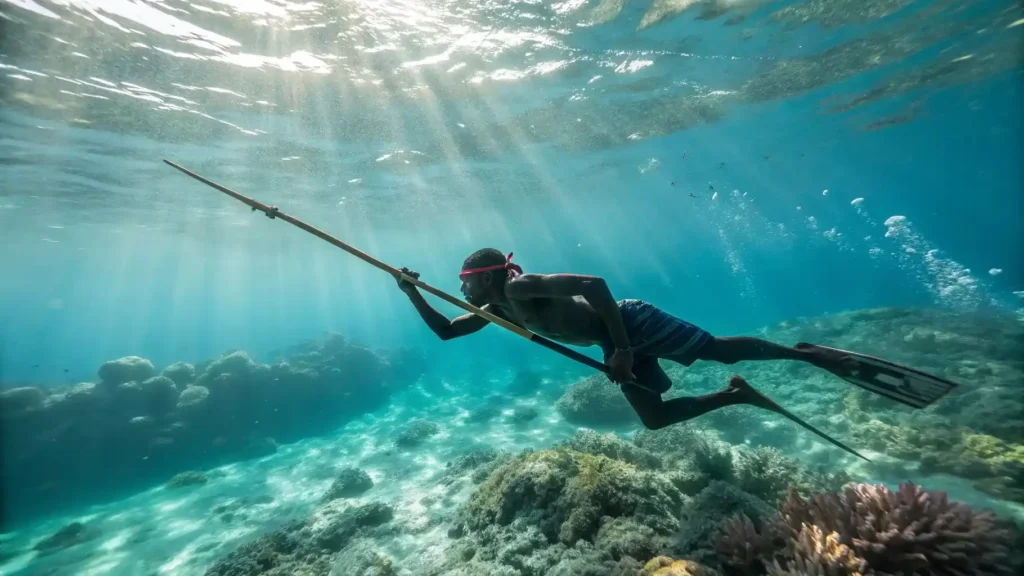
One of the most impressive abilities of the Bajo people is their free-diving expertise. Without modern diving gear like oxygen tanks, they can dive to depths of 20–30 meters and stay underwater for 3–5 minutes. Some scientists have even discovered a unique physiological adaptation: the Bajo have larger spleens than the average human, allowing them to store more oxygen when diving. This is a clear reflection of how their lifestyle is not just culturally, but physically tied to the sea.
4. A Life of Movement (Sea Nomads)
Although many now live in permanent villages, some Bajo groups still follow a nomadic lifestyle. They move from island to island, following the fish or adjusting to sea conditions. Their traditional boats, called lepa-lepa, aren’t just for transport, they serve as homes. Inside, there are sleeping areas, cooking spaces, and storage for their catch. This nomadic lifestyle shows just how deep their connection is with the sea, not only as a resource, but as their true home.
Culture of the Bajo Tribe
The Bajo’s culture is closely tied to the ocean, not only as a livelihood but as a core part of their identity and belief system. Here are some unique things to know about their language and culture:
- They Speak Their Own Language
The Bajo people speak the Bajo language, which belongs to the Austronesian language family. It has several dialects depending on the region, such as Wakatobi, Buton, or Kalimantan. They also often speak other local languages like Bugis, Makassar, or Bahasa Indonesia. - Rituals Before Setting Sail
Some Bajo communities perform special rituals or prayers before heading out to sea as a form of seeking protection. While the specifics vary from region to region, they all reflect respect for the sea and nature. These rituals also serve as moments of communal bonding. - Belief in Sea Spirits
The Bajo believe the ocean is guarded by invisible spirits. That’s why they behave with utmost respect while at sea, they avoid foul language and never throw trash into the water. To them, the ocean is sacred and spiritually significant. - Observing Ocean Taboos
There are many traditional taboos, or pamali, among the Bajo, especially while at sea. For instance, they never throw waste into the water, avoid overfishing, and are taught not to be boastful while sailing. Violating these taboos is believed to bring misfortune. - Oral Traditions and Folk Arts
While not all Bajo communities practice formal arts, some have traditional songs and oral stories passed down through generations. These tales often carry life lessons, seafaring adventures, or marine legends that reinforce their identity as true people of the sea.
Bajo Villages You Can Visit in Indonesia
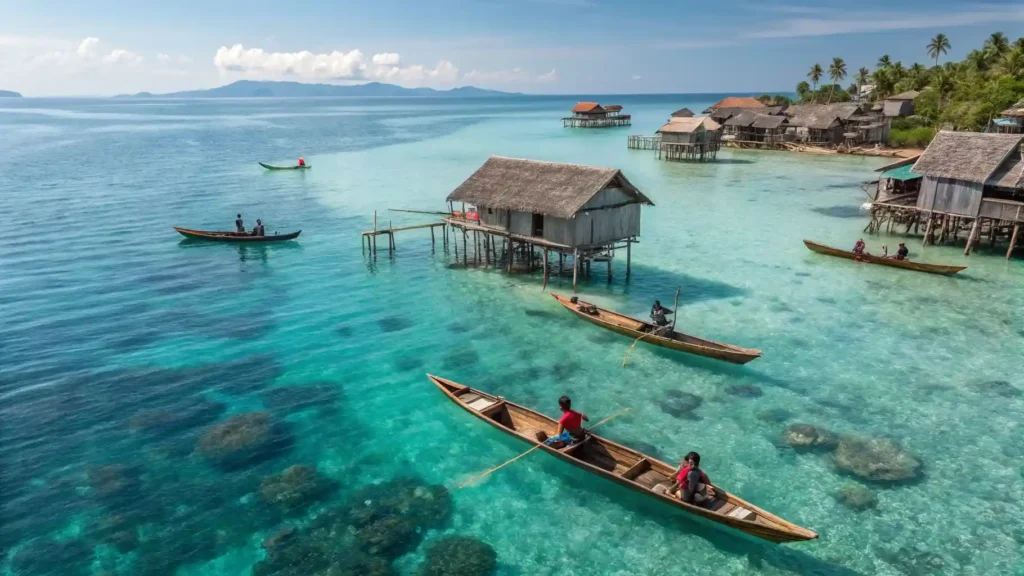
If you’re curious to experience the Bajo way of life firsthand, here are some of the best places in Indonesia where you can meet the sea nomads and see how they live:
1. Bajo Mola Village – Wakatobi, Southeast Sulawesi
Bajo Mola Village on Wangi-Wangi Island is one of the largest Bajo tribe communities in Indonesia. Here, you’ll find neat rows of stilt houses built over the sea, connected by small wooden bridges from one house to another. The locals still fish using traditional methods, and most of them continue to speak the native Bajo language. Several educational tourism programs have also been established here, such as live-in experiences with local families. It’s one of the best places to immerse yourself in the true culture of Indonesia’s sea people.
2. Labengki Kecil – Southeast Sulawesi
Famous for its stunning landscape often dubbed as a mini Raja Ampat, Labengki Kecil is also home to one of the remaining Bajo communities that have preserved their lifestyle. The villagers’ homes stand above crystal-clear waters, offering a peaceful atmosphere. If you join a Labengki tour, there’s usually a dedicated time to visit this village. You can witness the daily life of the fishermen, chat with cheerful local children, and even try out a traditional boat. Despite its remoteness, the warm hospitality will make you feel right at home.
Read more: How to Get to Labengki Easily for First-Time Travelers
3. Torosiaje – Gorontalo
Torosiaje is an iconic floating village in Tomini Bay, Gorontalo, entirely built over the sea. The only way to reach this village is by small boat from the mainland, making it feel like a world of its own. The Bajo people here live in harmony with the ocean, relying on it for daily life while upholding customs and taboos passed down through generations. Beyond its exotic setting, you can also enjoy fresh seafood and listen to fascinating stories from village elders. This destination is perfect for travelers who crave authentic cultural exploration
4. Mesa Village – East Nusa Tenggara
Not far from Komodo Island, Mesa Village is one of the sea villages inhabited by the Bajo community within the Komodo National Park area. The locals’ houses stand above shallow turquoise waters, and the residents continue to live as traditional fishermen. Here, you can observe how the Bajo people coexist with the sea, from drying salted fish and crafting fishing nets to diving for clams. Mesa Village is frequently visited by tour boats and is considered one of the key cultural highlights in Komodo’s tourism scene.
5. Komodo Village – East Nusa Tenggara (Minor Bajo Community)
While most of Komodo Village’s population consists of native Komodo and Manggarai ethnic groups, a small Bajo community has also lived here for generations. They coexist with the local people while maintaining their sea-oriented way of life. Though not a majority, their presence enriches the cultural tapestry of the village. If you visit Komodo Village, you might get the chance to meet Bajo families and hear their stories about growing up at sea and their deep connection to the ocean.
Travel Tips When Visiting Bajo Villages
Visiting a Bajo village is not just about witnessing their unique way of life, it’s also about being a respectful and mindful traveler. Before you go, here are a few tips to make your visit meaningful and considerate:
- Respect Local Customs and Traditions
Each Bajo village has its own rules and etiquette. Don’t take photos of people or enter homes without permission. Show respect, and you’ll be welcomed warmly in return. - Avoid Single-Use Plastic
Plastic waste is a serious issue in coastal areas and the ocean. Bring a reusable water bottle and fabric tote bags, and skip plastic-wrapped snacks whenever you can. Small efforts go a long way in preserving the environment they depend on. - Support the Local Economy
Instead of buying mass-produced souvenirs, shop directly from locals. Look for handmade crafts, smoked fish, or regional snacks. Hire local boats or eat at family-owned stalls, your visit can positively impact the community. - Keep It Clean, Don’t Pollute the Sea
The ocean is sacred to the Bajo. Never throw trash, cigarette butts, or anything else into the water. Respecting their home is one of the best ways you can honor their culture. - Be Friendly and Open
Bajo villagers might seem reserved at first, but they open up quickly when you’re polite and warm. A simple smile or casual chat can lead to an unforgettable exchange during your trip.
Read more: Komodo Island Complete Guide with IndonesiaJuara Trip
Discover the Bajo Tribe Through Your Labuan Bajo Journey
The Bajo tribe stands as a living legacy of Indonesia’s maritime traditions. From floating homes to a way of life that honors the sea, they offer timeless lessons on harmony with nature. When you join a Labuan Bajo Tour with IndonesiaJuara Trip, you won’t just explore stunning islands, you’ll also catch glimpses of the Bajo people’s life along the coast. Around Komodo National Park, places like Komodo Village and Mesa Village still echo with Bajo traditions, adding depth and cultural richness to your journey through Labuan Bajo.
